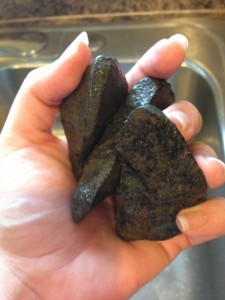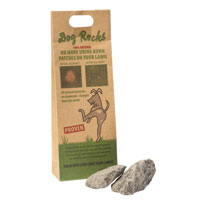Parasites can afflict pets any time of the year, however during the spring and summer months, they tend to be more prevalent. Our pets spend a lot more time outside when the weather is warm, and parasites breed more readily. Even if your pets spend all or most of their time indoors, it is possible for parasites to find them whether carried in on our clothes or by crawling through our screen doors. Here are some common parasites to look out for and ways to combat them this summer. Read More »
Category Archives: Pet Problems
Feed SubscriptionJuly 4th Fun & Fireworks – Pet Anxiety & Safety Tips
The July 4th Holiday is upon us, and unfortunately it is one of the busiest times for animal shelters due to the overwhelming amount of dogs lost during the fireworks & festivities. The fireworks may be fun for us, for some of our canine friends it can be downright terrifying.
During fireworks displays, or even while setting off fireworks in your backyard and neighborhood, your usually calm family pet may become extremely stressed. The stress overload can cause some pets to try to escape the house or yard. By following a few simple tips for this holiday weekend you can avoid coming home to an empty house and the anxiety of a missing beloved family pet.
- Avoid bringing your pet to fireworks displays, even if they are not usually startled by loud noises or thunder.
- Keep your pet indoors in a quiet, safe, sheltered area. Keep doors and windows closed and locked (I’ve heard stories of dogs opening slider doors or even jumping through windows to escape). Leave the TV on or play soothing music at a normal level to distract him from the noise outside
- Prepare a safe “den” for your pet. If they choose to hide under the bed, in their crate or somewhere else in the house, allow them to. If your dog is not crate trained, and you would like him to be please visit our comprehensive crate training guide.
- Feed your pet before the displays begin and keep a special chew treat on hand as a distraction.
- Nervous or stressed dogs may chew to ease anxiety. Make sure to provide proper chew toys and make sure all cords and other dangerous objects are out of reach
- Try a calming aid to help calm anxiety, or ask your vet for medication to help with your pet’s noise phobia.
- Do not leave your pet outside during the festivities. Even with a fence or a tie-out a dog can go to great lengths to escape the source of their anxiety.
- Always make sure your pet is wearing a properly fitted dog collar with up-to-date ID tags. Consider having your pet microchipped for extra security.
- Try not to reward anxiety with extra attention. It may be hard not to cuddle or fawn over your pet when he is scared, but do your best to ignore axious behavior or practice distraction techniques to turn their focus away from commotions.
Follow these simple steps to enjoy a worry free Independence Day. The knowledge that your family pets are safe and sound will make your holiday all the more fun. Have a great holiday weekend!
Severe Weather can also be very stressful on our pets. Check out this post for tips on keeping you pets calm during severe weather.
Jump Into Spring With These Flea Prevention Tips
Hi Pet Blog Readers,
We’ve made it to the middle of the week. If you are having trouble battling Hump Day, we’ve got a great guest blog from Hartz that should help you get through the day and also gain some valuable knowledge on flea prevention. Fleas can be troublesome and expensive to treat, so it’s a good idea to get ahead of the game and try to stop them before they start. Hartz has some great information and tips that will help. If you have any questions or comments, please let us know in the comments section below. Thanks!
_________
The weather is finally turning and that means it’s a great time to think about springtime flea prevention for your dog or cat. It may come as a surprise, but fleas are active year-round, which means those pests that survive the winter are just as ready for the spring as your four-legged friend.
Before your dog or cat stands at the door, ready to get back to enjoying the warm air and fresh grass of the outside world, there are a few steps you need to take to ensure that your pet is safe from those bloodsucking pests.
Examine your pet
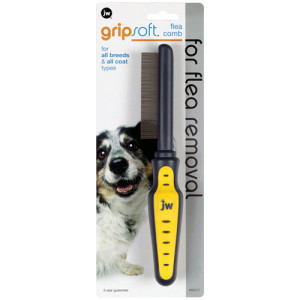
It is not uncommon for dogs or cats to pick up fleas during the winter, so you should inspect your furry friend for any signs of fleas or their eggs. Use a fine-toothed flea comb to check your pet for flea droppings, which are small black or dark brown specks that generally clump together at the base of your pet’s fur, or tiny white dots. If your pet has this residue clinging to his coat, then he has been infested with fleas and will need treatment before venturing outside. Fortunately, there are a few ways to instantly eliminate fleas. Your pet’s health care provider can prescribe a pill that will kill all the adult fleas present on your pet within 24 hours. In addition to medication, a bath using special flea shampoo can clean your dog or cat of any flea eggs or larvae.
Consider your pet’s lifestyle
There are so many flea-repelling products on the market that choosing just one can overwhelm pet owners. To get a better idea of what type of flea prevention care your furry friend needs, you need to take into account his outdoor surroundings and activities. For example: Does your dog like to explore wooden areas? Does your cat have a habit of climbing trees? Are there streams and other sources of water nearby? Do you and your pet live by the beach? All of these factors can increase your four-legged friend’s likelihood of contracting fleas, so you’ll need to answer these questions to better determine which flea prevention treatment is right for your pet.
Weigh the options
 Once you’ve considered your pet’s lifestyle, it’s time to choose the best flea treatment for your furry friend. Most pet owners narrow the options down to the flea collar versus flea drops. Flea collars are worn around the neck and work in two ways: some emit a gas that repels fleas, while others release medication that’s absorbed into your dog’s or cat’s subcutaneous fat layer. Once absorbed, it repels and eliminates adult fleas and larvae from infesting your animal’s coat. Flea collars can typically work for several months, with some newer designs lasting for up to eight months, making it a great option for pets that are always on the go or living in high-risk areas. Meanwhile, flea drops are a topical treatment that is applied between the shoulder blades of your dog or cat. These treatments attack fleas and their eggs, immobilizing and eventually eliminating them. However, flea drops only last for one month, so they require diligence and consistency from pet owners.
Once you’ve considered your pet’s lifestyle, it’s time to choose the best flea treatment for your furry friend. Most pet owners narrow the options down to the flea collar versus flea drops. Flea collars are worn around the neck and work in two ways: some emit a gas that repels fleas, while others release medication that’s absorbed into your dog’s or cat’s subcutaneous fat layer. Once absorbed, it repels and eliminates adult fleas and larvae from infesting your animal’s coat. Flea collars can typically work for several months, with some newer designs lasting for up to eight months, making it a great option for pets that are always on the go or living in high-risk areas. Meanwhile, flea drops are a topical treatment that is applied between the shoulder blades of your dog or cat. These treatments attack fleas and their eggs, immobilizing and eventually eliminating them. However, flea drops only last for one month, so they require diligence and consistency from pet owners.
Don’t forget the indoors
Flea prevention isn’t just for the outdoors. Fleas can hide in the nooks and crannies of your home, while flea eggs can lie dormant in your carpets or upholstered furniture for months on end. To ensure that your four-legged friend is safe from fleas, vacuum your home at least once a week, including your furniture, tough-to-reach corners and any bedding your pet touches. Studies have shown that vacuuming eliminates 96 percent of adult fleas and nearly 100 percent of young fleas.
How to treat and prevent flea allergy dermatitis in dogs
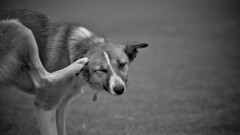 Many people in the northeast have had a rough time with fleas this summer. A combination of a mild winter in 2012 and a humid summer have created the perfect storm for these tough bugs to thrive. The battle against flea infestations doesn’t end with the cooler weather of fall. In many areas, even here in the northeast, fleas are active until the dead of winter and can even continue living in your home during the cold winter months. Don’t let your guard down, the battle against fleas is never over.
Many people in the northeast have had a rough time with fleas this summer. A combination of a mild winter in 2012 and a humid summer have created the perfect storm for these tough bugs to thrive. The battle against flea infestations doesn’t end with the cooler weather of fall. In many areas, even here in the northeast, fleas are active until the dead of winter and can even continue living in your home during the cold winter months. Don’t let your guard down, the battle against fleas is never over.
 I use a topical “spot on” flea preventative on my dogs every month. If you want to get specific about it, I use Sentry Fiproguard Max (it’s a less-expensive generic brand of Frontline Plus). However, these preventative measures weren’t enough for me this year.
I use a topical “spot on” flea preventative on my dogs every month. If you want to get specific about it, I use Sentry Fiproguard Max (it’s a less-expensive generic brand of Frontline Plus). However, these preventative measures weren’t enough for me this year.
Read More »
Do Dog Rocks Work to Prevent Urine Burn? A Dog Rocks Review
In post earlier this week, I explained what Dog Rocks are and how they claim to eliminate new urine burn spots on your lawn. I used them for 30 days and here is what I found:
I’m not sure what I expected, but I removed the Dog Rocks from the package… and they were plain looking rocks. Maybe I expected them to feel magical or mysterious in some way, but no, just igneous rock from a special site in Australia.
[Mini Geology Lesson: Igneous rock is one of the 3 main types of rock found in the Earth’s crust. It is formed through the cooling of magma (lava). The conditions of the cooling magma (if it is under a lot of pressure, if it cools very fast or very slow, etc) determine the specific properties of the rock (how porous it is, color, texture). ]I rinsed them and placed them in the filter housing area of my dog water fountain so that my pups wouldn’t be tempted to remove and chew on the rocks. Then it was just a waiting game.
These are the photos of the areas where my dogs usually eliminate on day 1:
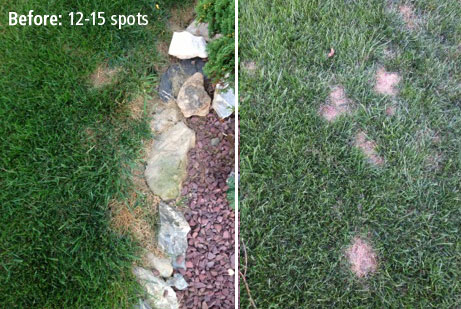
2 main areas of my yard before using Dog Rocks
Here are the photos of the same areas on day 31:
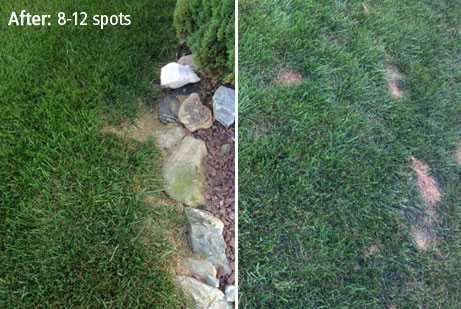
Same areas of the yard after 1 month of using Dog Rocks
My opinion: Do dog rocks work?
While I admit that my results weren’t as amazing as the photos on the packaging suggest, I definitely do see an improvement. My dogs go to the bathroom in the same area of the yard day after day, so there aren’t spots anywhere else on my lawn from my own dogs. Dog Rocks won’t cure the already existing burn spots, so I was looking for new burn patches in these areas. Instead, what I see is my grass growing back into the previously burnt areas, and no clear evidence of new burn spots. Again, this is only after 1 month. I’ll continue to use them and hopefully by spring I’ll have a lush green lawn like my neighbors 🙂
A couple of notes:
- I conducted this test in August, which isn’t exactly the best month for growing new grass in our area. Dog Rocks won’t cure the already existing urine burns, freshly grown grass will eventually fill in the spots. You can speed up the process by tilling the burnt areas and planting new grass seed. I prefer to let the lawn do the hard work.
- Diet plays a major role in the amount of nitrates in your dog’s urine. I feed a pretty high protein, home cooked diet because my dogs are highly active. Choosing a high quality dog food with appropriate protein levels for your dog is a key component in controlling lawn burn.
- Dog Rocks need to be replaced every 2 months and one packet of rocks should be in each water bowl that is available to your dogs for the best results.
Because I have three dogs and a pretty small yard, my results might not be typical. Pick up a package of dog rocks and give them a try for yourself. They’re all-natural, they won’t harm your pet (so long as they don’t eat the rocks), they’re inexpensive compared to other additives and alternatives, and they might help prevent unsightly urine burn patches on your lawn. Find Dog Rocks at the lowest price online at thatpetplace.com!
Preventing Lawn Urine Spots: What are Dog Rocks and How Do They Work?
If you have dogs and you like to keep a nice green lawn, you probably have tried every remedy in the book to prevent those unsightly urine burn patches in the area where your dog pees. There’s a new product in town that claims to prevent your dog’s urine from burning your lawn when used as directed.
Dog Rocks USA was kind enough to provide me with a sample of their product to try and review. Up front, let me tell you that I was skeptical that rocks could help me in my battle of the brown spots in my lawn. First, let me straighten a few things out:

Lawn burn cause by my boys’ leg lifting near the edge of my garden.
- Dog Rocks are not going to rid your lawn of existing urine spots, but is intended to prevent new spots. This is an important distinction.
- Dog Rocks do not change the pH of your dog’s urine (which can be harmful, especially to dogs with kidney disease)
- Diet also plays a key role in how many urine burn patches you have on your lawn. A diet very high in protein creates more nitrogen in your dog’s urine. Feed a high quality diet for the best results. Dog rocks will not alter the amount of nitrogen (nitrates) your dog produces naturally.
After that last point, you may be wondering how Dog Rocks work
Read More »
How to clean pet stains & the best stain and odor removers
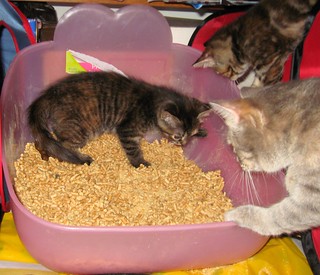 An alarming number of pets are surrendered every day because of behavioral problems. Many times these problems involve inappropriate elimination, in other words the pet is peeing or pooping outside of appropriate places (like the litter box or the yard). Inappropriate elimination in cats is particularly alarming because a cat is most likely to pee outside of the litter box when they are ill, and they usually have some sort of urinary tract infection as the root cause. The moral here being, if your cat is peeing outside of the litter box, take a trip to the vet, not the shelter!
An alarming number of pets are surrendered every day because of behavioral problems. Many times these problems involve inappropriate elimination, in other words the pet is peeing or pooping outside of appropriate places (like the litter box or the yard). Inappropriate elimination in cats is particularly alarming because a cat is most likely to pee outside of the litter box when they are ill, and they usually have some sort of urinary tract infection as the root cause. The moral here being, if your cat is peeing outside of the litter box, take a trip to the vet, not the shelter!
Pets can pee or poop inside the house for other reasons too, for example if they were never properly house trained or if they are very young. If there is one thing that all pet owners can agree on, it is that nothing stinks up a house quite like pet urine.
So if you have a pet that is going to the bathroom outside of the litter box or the yard, Step 1 is to clean the affected areas so that your home stays fresh and your pets are less likely to eliminate there again. step 2 is to visit the vet to rule out any potential health problems related to this bad behavior. Step 3 is to train, or re-train, your pets where they’re supposed to do their business.
This article is focusing on what I consider to be the hardest step.. Step 1: Cleaning pet urine stains and odors. Cleaning cat or dog pee off of your carpets and floors can be challenging if you don’t have the right products. What are the best products to use? Well, this pet owner has tried her fair share of pet cleaning products and some do work better than others.
Read More »
How much is too much – What is the real cost of extending our pets’ lives?
If you’ve been a Pet Blog reader for some time now, you know that I treat all of my pets as if they were two-legged family members. They get home cooked meals, birthday parties, and great veterinary care. Each one of them has worked their way deep into my heart, and life without any one of them just wouldn’t be the same. A medical issue has come to a head recently and left me with some very serious topics to consider: How much is too much to spend to extend a loved one’s life, and what is the true cost emotionally, financially and through the suffering of your beloved pets? Read More »
Do Pet Owners Have Rights?
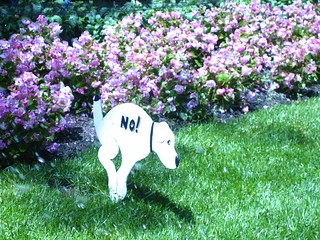 All responsible dog owners know the laws that we need to follow for our pets. We need to have them vaccinated against deadly diseases, we need to have them licensed and spayed or neutered. We know we have to report dangerous dogs and uphold a leash law where required. Most of us also know that we need to pick up our pet’s waste (even if there is no official law in place).
All responsible dog owners know the laws that we need to follow for our pets. We need to have them vaccinated against deadly diseases, we need to have them licensed and spayed or neutered. We know we have to report dangerous dogs and uphold a leash law where required. Most of us also know that we need to pick up our pet’s waste (even if there is no official law in place).
See, my neighborhood has a bit of a poo problem. Some of my dog-walking neighbors neglect to clean up their pets’ waste, even if the deed has been done in the middle of another neighbor’s yard. I know that this is not a problem exclusive to our neighborhood, or even just our city. However, our homeowner’s association has been petitioned to raise the HOA fees for pet owners and to use the extra money to create and maintain a “dog bathroom area” in the community. The petitioner wants pets to use this central area in the neighborhood to do their business and pet owners somehow need to prevent their pets from eliminating elsewhere. Read More »
Dealing with Hot Spots – Pet Health
Has your pet ever experienced hot spots? Hot spots, otherwise known as acute moist dermatitis (AMD), are red, oozing lesions that may form on your pet’s skin…they’re kind of wet and scabby. The patches of irritation may start out as an unnoticeable bite, sting, pustule or other minor skin problem, but your dog’s natural instinct to lick, chew and scratch the area leads to a larger, more visible patch which progresses from a minor bump to hair loss, staining, flaking and possibly infection or permanent scars. Hot spots can can be a problem any time of year, and for any dog, and if you’ve ever had a pet develop hot spots you can guess from seeing them how aggrivating and painful they must be to experience. Let’s discuss hot spots and how you can prevent, heal and otherwise deal with AMD.
What Causes Hot Spots?
 Hot Spots have lots of causes, and they rear their ugly heads quickly, and sometimes without any warning. Some of the most common causes are flea or insect bites. Allergens or other irritants that come in contact with your pet’s skin are also a common cause. Small scratches or wounds can also begin an outbreak, particularly as your dog instinctively licks the area. Dogs that experience stress, anxiety or boredom can also scratch or chew, simply to occupy their minds. But the underlying blame falls on bacteria that infest these minor skin breaks, further inflaming an already irritated area. Any dog can develop a hot spot, but dogs who are not washed and brushed regularly, those with sensitive skin, and those with thick, long fur can be more prone to developing hot spots. Read More »
Hot Spots have lots of causes, and they rear their ugly heads quickly, and sometimes without any warning. Some of the most common causes are flea or insect bites. Allergens or other irritants that come in contact with your pet’s skin are also a common cause. Small scratches or wounds can also begin an outbreak, particularly as your dog instinctively licks the area. Dogs that experience stress, anxiety or boredom can also scratch or chew, simply to occupy their minds. But the underlying blame falls on bacteria that infest these minor skin breaks, further inflaming an already irritated area. Any dog can develop a hot spot, but dogs who are not washed and brushed regularly, those with sensitive skin, and those with thick, long fur can be more prone to developing hot spots. Read More »
 That Pet Blog That Pet Place Pet Blog
That Pet Blog That Pet Place Pet Blog


